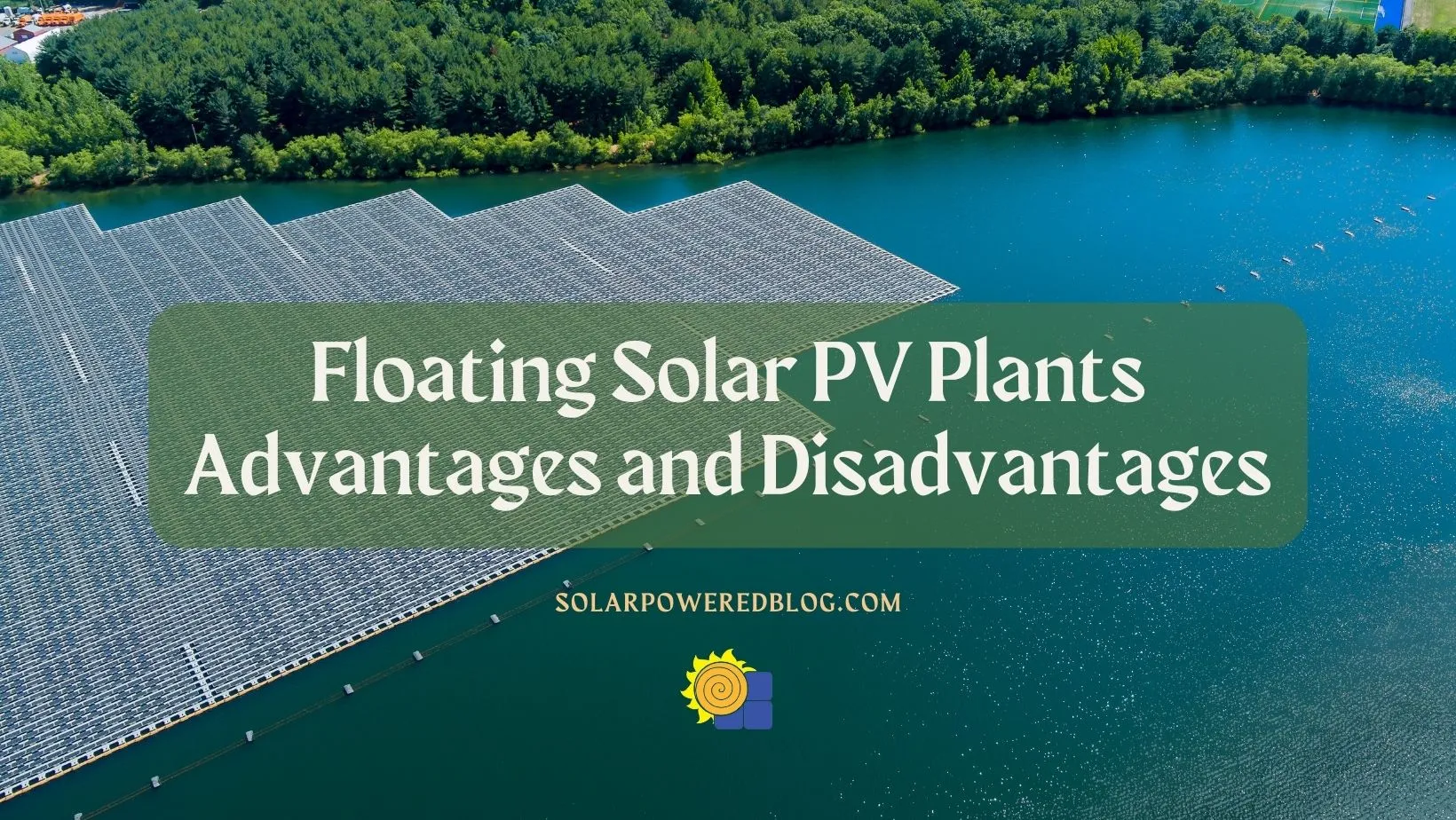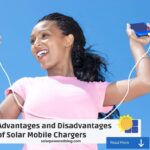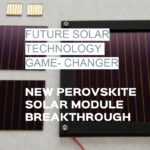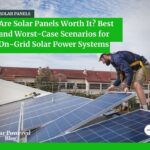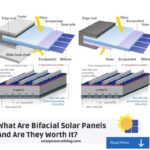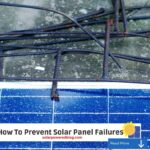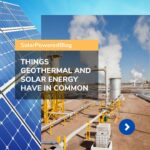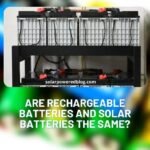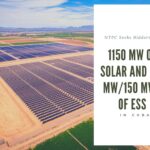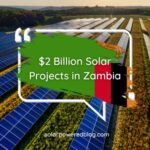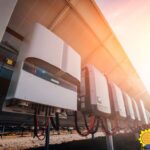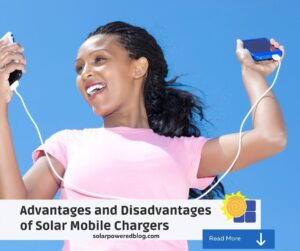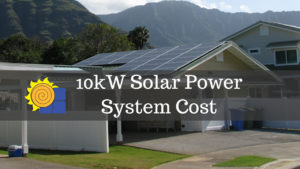In an era of global transition towards a net zero emissions future, solar energy stands as a prominent catalyst. However, the expansion of solar farms faces a challenge in terms of land use requirements, particularly as population density rises and land prices soar. A revolutionary solution to this dilemma comes in the form of floating photovoltaics (FPV), also known as floating solar plants, where solar photovoltaic (PV) systems are ingeniously installed on bodies of water.
While traditional solar photovoltaic (PV) installations have been successful on land, a new trend is emerging that takes solar power to the water: floating solar PV plants. As someone who has designed a couple of projects in this field, I can attest to the unique advantages and considerations that come with this innovative approach. However, we will also discuss the drawbacks or disadvantages that exist in this type of solar plant application.
What are floating solar PV plants and how do they work?

FPV plants are designed for stagnant water conditions. They are suitable for ponds and lakes with consistent water tables. Utilizing these water bodies maximizes space efficiency. It also creates new opportunities for renewable energy generation.
The FPV systems are solar power installations that are constructed on bodies of water, such as lakes, reservoirs, and ponds. These plants utilize photovoltaic (PV) panels, which consist of solar cells that convert sunlight into electricity. The PV panels are mounted on floating structures, typically made of buoyant materials like high-density polyethylene or reinforced concrete. The floating platforms are designed to remain stable on the water while providing a secure foundation for the solar panels. The electricity generated by this type of solar power system can be transmitted to the grid or used for various purposes, such as powering nearby facilities or water treatment plants.
The setup of an FPV plant involves installing PV panels, string inverters, and cable trays on specially designed floaters. These floaters, typically larger in size than the PV modules themselves, are assembled together to form a stable platform. To prevent excessive movement, the platform is securely anchored to the nearby surface. By utilizing the water’s surface, floating solar PV plants can maximize their exposure to sunlight throughout the day.
What are the main advantages of floating solar PV plants?
FPV plants offer several advantages over traditional solar installations.
- First, they make efficient use of available space by utilizing bodies of water that may be otherwise unused.
- Second, the water’s cooling effect enhances the performance of the solar panels, increasing their efficiency.
- Third, floating solar plants can reduce evaporation from water bodies, helping to conserve water resources.
- Fourth, the floating platforms can help mitigate algae growth by shading the water surface and maintaining water quality.
- Finally, these installations can have a minimal land impact and can be deployed in areas where land availability is limited, providing additional opportunities for solar power generation.
These advantages make floating solar PV plants an attractive option for renewable energy generation, especially in areas where land is limited, water bodies are available, and there is a need for efficient land and water resource utilization.
Advantages of Floating Solar PV Plants Over Traditional Solar Installations

One of the significant advantages of floating solar is its higher performance compared to conventional PV systems. As the temperature rises, the efficiency of standard solar panels declines.
However, floating solar panels benefit from being installed on water, which provides a cooler environment. The convection of air passing over the water helps maintain low module temperatures, boosting efficiency and overall energy yield.
Another crucial advantage of floating solar is radiation balance. When PV modules are installed on land, they modify the albedo (the amount of radiation reflected) of the area, potentially reducing overall reflection.
When placed on water, the modules and the water itself have a low albedo, ensuring that the radiation balance remains intact. This characteristic contributes to the efficiency and effectiveness of floating solar systems.
Water scarcity is a pressing issue in many regions. Floating solar not only generate clean energy but also helps save water. By covering water surfaces with solar panels, evaporation is reduced, making it an environmentally friendly solution for water-scarce areas.
Maintenance is also easier with floating solar. Access to water allows for convenient cleaning of the modules, ensuring optimal performance. Moreover, the modules experience fewer thermal cycles compared to those installed in desert areas. Water acts as a heat sink, minimizing temperature fluctuations and extending the lifespan of the PV modules.
What are the main disadvantages of floating solar PV plants?
Floating solar PV plants offer several advantages. They make use of underutilized water bodies. Because of that, they also reduce land requirements. They have the potential to increase energy generation due to the cooling effect of water. However, they also have some drawbacks.
- Higher installation and maintenance costs: Solar PV installations on water bodies require specialized floating structures, anchoring systems, and components designed for water environments. These specialized elements can increase the overall project cost compared to traditional ground-mounted installations.
- Limited availability of suitable water bodies: Not all water bodies are suitable for solar PV installations. Finding appropriate locations with large, stable, and shallow bodies of water like lakes, reservoirs, or water treatment ponds can be challenging, limiting the potential for widespread deployment.
- Environmental impact: The construction and operation of solar PV installations on water bodies can have environmental consequences. They may affect water quality, disrupt aquatic ecosystems, and alter local biodiversity. The shading effect of the installations can also impact underwater flora and fauna.
- The durability of floating structures: Solar PV installations on water bodies must withstand various environmental conditions, including wind, waves, and storms. The floating structures need to be durable and capable of withstanding these challenges to ensure the long-term stability of the system.
- Scalability limitations: The scalability of solar PV installations on water bodies is limited by the availability of suitable water surfaces. Expanding such projects requires additional water area, which may not always be feasible or environmentally viable.
- Interference with existing water use: Solar PV installations on water bodies occupy valuable water surfaces that may have other uses, such as agriculture, fishing, recreation, or navigation. The presence of solar installations can interfere with these existing activities and potentially create conflicts over land use.
More Drawbacks of Floating Solar Plants

However, despite the ingenuity of floating solar, it does have its challenges. One of the primary concerns is the higher cost compared to traditional PV systems. On average, floating solar is approximately 18% more expensive.
Nevertheless, the increased energy production offsets this cost difference, resulting in a slightly higher levelized cost of electricity. Additionally, ongoing investments in floating solar technologies are expected to drive down costs in the future.
To expand the use of floating solar across Europe, several factors need attention. Developing cost-effective floating elements, mooring systems, and anchoring technologies is crucial. Calm water bodies, where wave forces are minimal, offer ideal locations for inland floating PV installations.
Monitoring the impact of floating solar on aquatic ecosystems and establishing standardized guidelines and regulations are also essential for widespread adoption.
The payback period for floating solar panels depends on the geographical location. Areas with higher solar irradiance yield faster returns on investment. Currently, China boasts the largest floating solar farm, with a capacity of approximately 320 megawatts.
Are floating solar PV plants suitable for all types of water bodies?
While FPV plants have the potential to be suitable for a variety of water bodies, site-specific assessments should be conducted to evaluate factors such as size, stability, water quality, and transmission infrastructure to determine their feasibility and viability.
Floating solar power plants can be suitable for various types of water bodies, including lakes, reservoirs, and ponds, but their suitability depends on certain factors. Lakes and reservoirs are generally considered ideal for floating solar installations due to their large surface areas, which provide ample space for deploying the panels.
They also tend to have stable water levels, reducing the risk of damage to the floating structures. Ponds, on the other hand, can be suitable for smaller-scale installations, but factors such as water depth, size, and stability need to be considered.
Minimal wave action and turbulence are essential for the stability of the floating platforms. Additionally, the solar panel performance in the water body.
Assessing water quality is necessary to prevent panel damage or performance hindrance from substances present. Access to transmission infrastructure is another important consideration for effective integration into the grid.
Did you know that floating solar panels sometimes get mistaken for giant water lilies by curious ducks? Yep, those feathered friends just can’t resist a new place to take a nap! Imagine their surprise when they realize it’s not a comfy lily pad but a sun-powered energy machine. Quack-tastic! Just remember, ducks, no belly flops allowed! Keep those solar panels shiny and your splashy adventures limited to the water.
Important Factors to Consider
One important factor to consider when designing an FPV plant is the tilt angle of the PV panels. It is crucial to maintain a tilt angle of no more than 5 degrees to achieve an optimal coverage ratio. This ensures that the panels capture the maximum amount of sunlight while minimizing shading effects between neighboring modules.
In terms of cabling, both DC and AC systems must be carefully planned. The DC cabling mimics ground-mounted installations, sagging to adjust to water level fluctuations. AC cabling, however, faces extra challenges from water movement and harsh waves. To overcome these obstacles, AC cables are suspended like sea serpents, ensuring both mobility and electrical integrity.
When it comes to material selection, polymer components are highly recommended for their durability and resistance to water damage. In cases where metal components are necessary, choosing materials with C5 plus categories and IP67 plus ratings ensures protection against corrosion and ingress of water.
As with any renewable energy project, operations and maintenance (O&M) play a crucial role in the long-term success of FPV plants. Extensive research and real-world experience have contributed to the development of effective O&M practices tailored to these unique installations. The presence of water and the gentle tilt angle provides a natural cooling effect for the PV panels, enhancing their overall performance and longevity.
Floating Solar PV Trends and Statistics

Installed floating photovoltaic (FPV) capacity is experiencing rapid growth worldwide, with the capacity doubling each year and predicted to continue this trend. In 2020, China accounted for the majority of installed FPV projects, as shown in the figure above
Although the cost of FPV is currently higher than ground-mounted photovoltaic (GPV) systems, with a project break-even cost 4-8% higher, the sector is witnessing significant global expansion. However, there is limited understanding of the potential negative impacts of FPV, underscoring the importance and timeliness of conducting a comprehensive review on the subject.
Conclusion
While floating solar farms offer great promise, they also face some challenges. The technology is relatively new, and specialized equipment for installation comes at a higher price compared to traditional land-based solar farms. However, as the demand for renewable energy grows, floating solar power is expected to play a crucial role in reducing our carbon footprint.
As we continue to develop floating solar technology, it’s essential to address challenges and seek sustainable solutions. With ongoing efforts and advancements, floating solar farms can become a key player in the fight against climate change and the pursuit of a greener, more sustainable future.
After reading the article, if you found the information on floating solar PV plants insightful and would like to stay updated on the latest developments in renewable energy, I invite you to subscribe to our mailing list. By subscribing, you will receive regular updates, industry news, and exclusive content directly to your inbox. Don’t miss out on the opportunity to be part of the renewable energy revolution – subscribe today!

